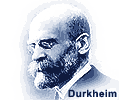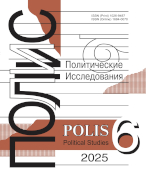Russian electoral indices evolution in 1996-2012
Buzin A.Yu.,
Cand. Sci (Phys-Math. Sci.; Law Sci.), Associate Professor, Peoples’ Friendship University of Russia, Chairman of the Interregional Association of Voters, Co-Chair of the Public Movement «VOTE», abuzin@votas.ru
DOI: 10.17976/jpps/2014.06.05
Buzin A.Yu. Russian electoral indices evolution in 1996-2012. – Polis. Political Studies. 2014. No. 6. https://doi.org/10.17976/jpps/2014.06.05
Evolution of an extremely important electoral index – the election commissions’ distribution on turnout – in all-Russian federal elections during 1996 2012 is analyzed. This index is generally defined by social factors and, in natural conditions, should be close to Gaussian distribution. Such distribution is shown by the elections of in the 1990s; however, the 2000s were marked by a drastic change which can be explained by administrative influence on the election results. The presidential elections of 1996 2012 are also analyzed with application of Sobyanin-Suchovolskiy method.
See also:
Grishin N.V.,
The Phenomenon of Constituency Boundaries Commissions: Development and Prospects. – Polis. Political Studies. 2018. No4
Korgunyuk Yu.G.,
Electoral Corruption. Medical Record. – Polis. Political Studies. 2015. No2
Akhremenko A.S.,
The Structuring of the Electoral Space in Russia’s Regions (Factors-Analysis of the Parliamentary Elections of 1995 to 2003). – Polis. Political Studies. 2005. No2
Zorin M.A.,
Metaphors of Elections (With the Election Campaigns of the “Yabloko” Party and of the Right Forces Union, as Example). – Polis. Political Studies. 2004. No5
Borisov S.V., Dakhin A.V., Makarychev A.S.,
A Contest with No Gainer: the Recent Mayoral Elections in Nizhniy Novgorod. – Polis. Political Studies. 2002. No6




.jpg)






 print
print
.jpg)
.jpg)